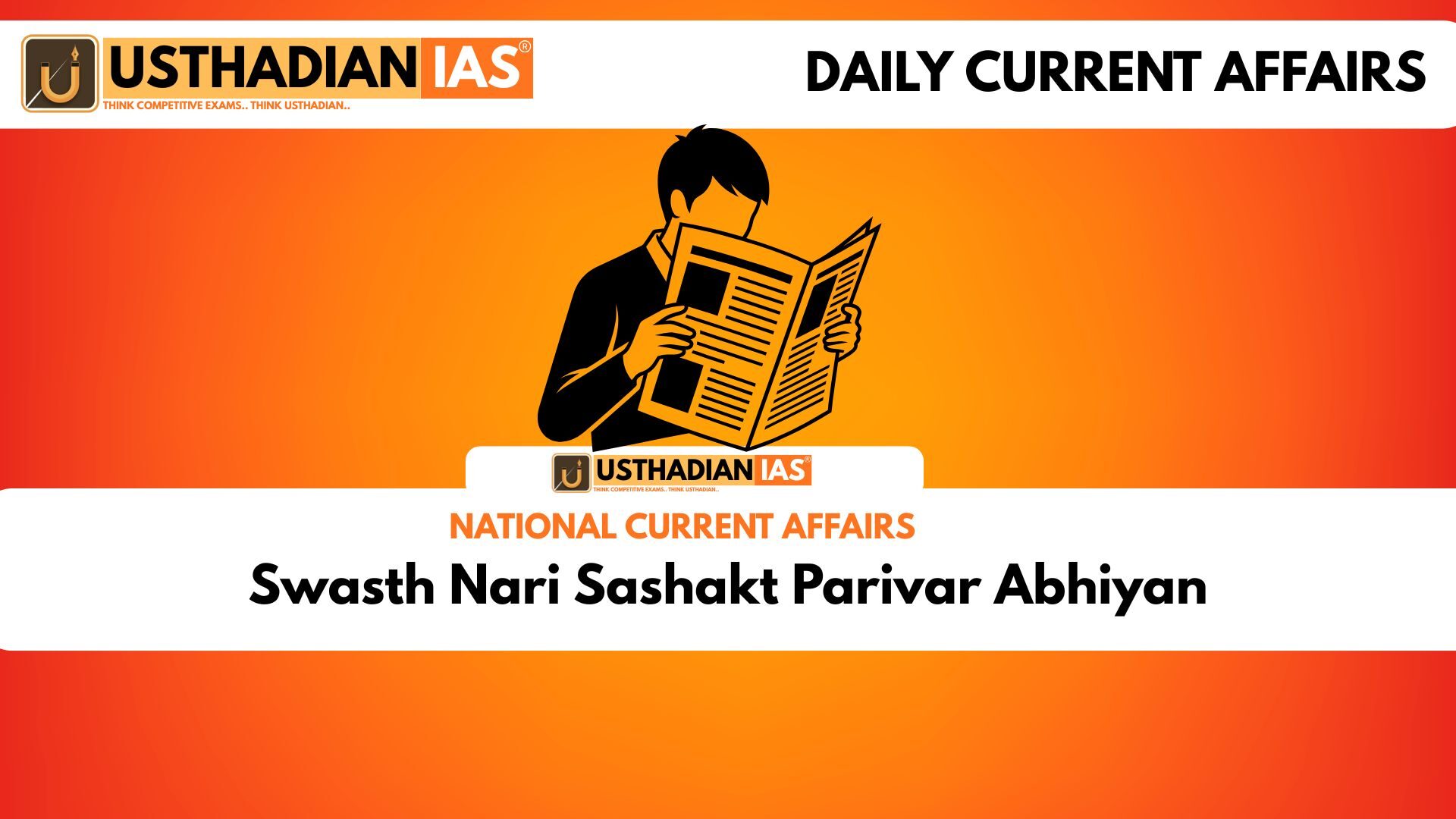Introduction
Swasth Nari Sashakt Parivar Abhiyan: The Government of India has launched the Swasth Nari Sashakt Parivar Abhiyan to strengthen women’s health and empower families. The initiative reflects a strong focus on preventive healthcare and nutrition for women, directly linking women’s well-being with national development.
Key Objectives
The Abhiyan aims to conduct more than one lakh health camps across the country. Women will be screened for anaemia, hypertension, diabetes, and cancer, alongside services for immunization and nutrition. The larger goal is to reduce maternal and child mortality by tackling health issues early.
Static GK fact: India’s Maternal Mortality Ratio (MMR) was 97 per 100,000 live births in 2018–20, as per the Sample Registration System.
Ministries Involved
This programme is a joint initiative of the Ministry of Health & Family Welfare (MoHFW) and the Ministry of Women & Child Development (MWCD). Together, these ministries aim to integrate healthcare delivery with women’s empowerment policies, creating a holistic impact.
Static GK fact: The Ministry of Health & Family Welfare was established in 1976, while the Ministry of Women & Child Development became an independent ministry in 2006.
Role of Technology
The SASHAKT portal is central to the Abhiyan. It ensures real-time monitoring, tracking progress across states and districts. This technology-driven approach will enhance accountability and transparency, ensuring that resources reach the targeted beneficiaries.
Static GK Tip: India’s Digital India programme, launched in 2015, promotes technology-driven governance and citizen services.
Community and Institutional Participation
The Abhiyan relies on strong community partnerships. Anganwadis, Nikshay Mitras, private hospitals, and other organizations will actively participate in the screening and awareness campaigns. Such collaboration bridges gaps in rural and urban healthcare delivery.
Static GK fact: The Anganwadi system was launched in 1975 under the Integrated Child Development Services (ICDS) scheme.
Expected Impact
By focusing on women’s health, the Abhiyan envisions healthier households and empowered families. Preventive care will reduce the burden on tertiary hospitals, while early detection of diseases will improve survival rates. Over time, it is expected to significantly contribute to India’s National Health Mission goals.
Static Usthadian Current Affairs Table
Swasth Nari Sashakt Parivar Abhiyan:
| Topic | Detail |
| Launch | Swasth Nari Sashakt Parivar Abhiyan launched by Prime Minister |
| Main focus | Screening for anaemia, hypertension, diabetes, cancer, and maternal health |
| Ministries | Ministry of Health & Family Welfare and Ministry of Women & Child Development |
| Technology support | SASHAKT portal for real-time monitoring |
| Community role | Anganwadis, Nikshay Mitras, private hospitals |
| Target | Over one lakh health camps nationwide |
| Broader goal | Reduce maternal and child mortality |
| Static GK fact | MMR in India: 97 per 100,000 live births (2018–20) |
| Anganwadi launch | 1975 under ICDS |
| Women empowerment link | Connects women’s health with family and national development |








